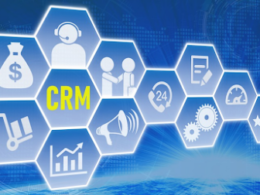Email marketing is one of the strongest and most efficient ways to reach your customers. In fact, the average person checks their email about 15 times per day. With an estimated 293.6 billion emails anticipated to be sent worldwide in 2019, it’s safe to assume that your customers are getting their fair share of email communication. So, how can your startup’s email marketing stand out from the competition?
Integrating automation with your email marketing campaigns is absolutely essential to give your business the competitive edge it needs. The information in your customer relationship management (CRM) system is incredibly valuable, and it’s time to tap that value via complimentary marketing automation technology to enhance your email marketing.
Consider the following tips for maximizing the value of your startup’s email marketing campaigns with integrated marketing automation technology.
The standard email campaigns of yore
Back in the day, it was enough to simply have an email campaign. Especially as a startup, there wasn’t much expectation from customers, other than letting them know about updates or special offers. Startups could reach out to their customers with a generic subject line and greeting such as “Dear Friend,” and get the message across.
Now that email capabilities and target audiences have matured, so must our email marketing tactics. Targeted email marketing with personalization that leverages marketing automation and the data from your CRM will put your business in the best place to secure click-throughs and grow revenue.
Related: Take Your Startup’s Marketing Automation Further with AI
Actionable customer data and measurement
Your CRM is full of fantastic, juicy data just waiting to be analyzed and used to help you grow your business. Below are just a few types of information gathered through marketing automation, which are likely found in your CRM and could help you build stronger email campaigns.
- Open rates: This is the percentage of people who are actually opening the email you sent. Not only that, but your CRM will be able to identify which customers are opening your emails for an even deeper dive into your customer base.
- Click-through rate: The click-through rate, or CTR, is how many people not only opened your email, but clicked on the link inside to navigate to your website or landing page. This number can show you how compelling your content and calls to action were.
- Navigation: From the click-through to your website, you can now follow this customer’s journey and track where they visited on your website and how they got to each page.
- Length of visit: You’ll know how long your customers spent on each page, as well as how long they spent in total on your website.
- Outcome: Finally, you’ll also be able to track the sales funnel and determine the outcome of the visit. For example, whether or not the customer dropped out and left your website or completed a purchase.
All of this indispensable data will be captured and stored. By pairing this captured information with marketing automation, you can take additional steps to catch your customers’ attention and build upon these relationship.
Personalization
One of the most impactful ways in which marketing automation allows us to improve the email marketing experience is through personalization. Customers today expect a lot from the companies they purchase from, and an effective lead nurturing program can provide a completely tailored marketing experience to meet each customer’s needs.
Statista notes that emails without personalization showed an open rate of 13.1 percent, while those that included personalization boasted an 18.8 percent open rate.
Personalization can include anything from using the customers’ name, inquiring about performance of a recent purchase, or providing individualized product suggestions based on their search history and interest.
Segmentation and testing
With the information collected from a CRM, entrepreneurs will also be able to digest and spot similarities between their customers. This will allow for segmentation (or grouping) of customers with similar traits, such as demographics, purchase history and even open or CTR rates. Separate campaigns can then be developed for each segmented group, targeting specific actions or interests for each email campaign.
According to DMA’s National Client Email Survey, a segmented email campaign can drive as much as a 760 percent increase in revenue compared to a one-size-fits-all campaign.
Blending segmentation with marketing automation allows marketers to adapt to customer needs and test different approaches. Creative or alternate subject lines for a specific group of customers can be released as an A/B test.
Customer retention can be addressed by attempting to engage customers who have stopped opening emails by testing a new and refreshed email template. This will allow you to potentially reintroduce a relationship, retain customers and make sales, where previous marketing efforts may have been falling flat.
Sign Up: Receive the StartupNation newsletter!
Identifying trends
All of this data and automation can help startups to identify trends within their customers and business cycle.
Perhaps emails that announce a special offer or sale have the largest open rate and lead to the biggest boost in revenue. Or, maybe you’ll discover that the CTR is the highest when an email links to a blog post with interesting and useful information.
Through the use of marketing automation and your CRM, these trends can first be identified, and then used to predict future performance of email marketing campaigns. Any identified trends can even help set ROI goals and expectations.
Open for business
Your company’s email marketing campaigns will continue to thrive, as long as they are accompanied by the right marketing automation technology to help gather, analyze and use information to create robust and effective campaigns that target the customer.






